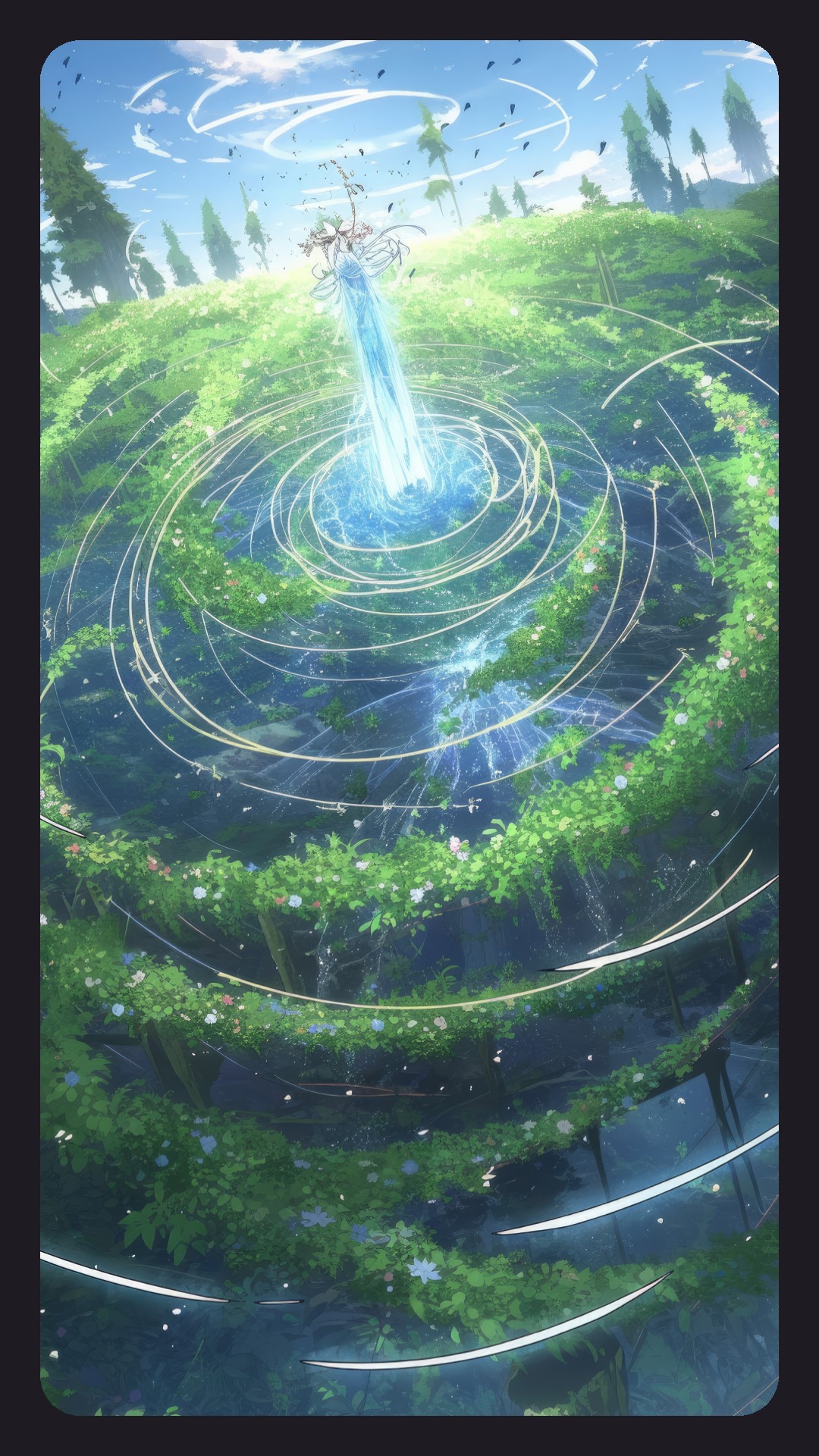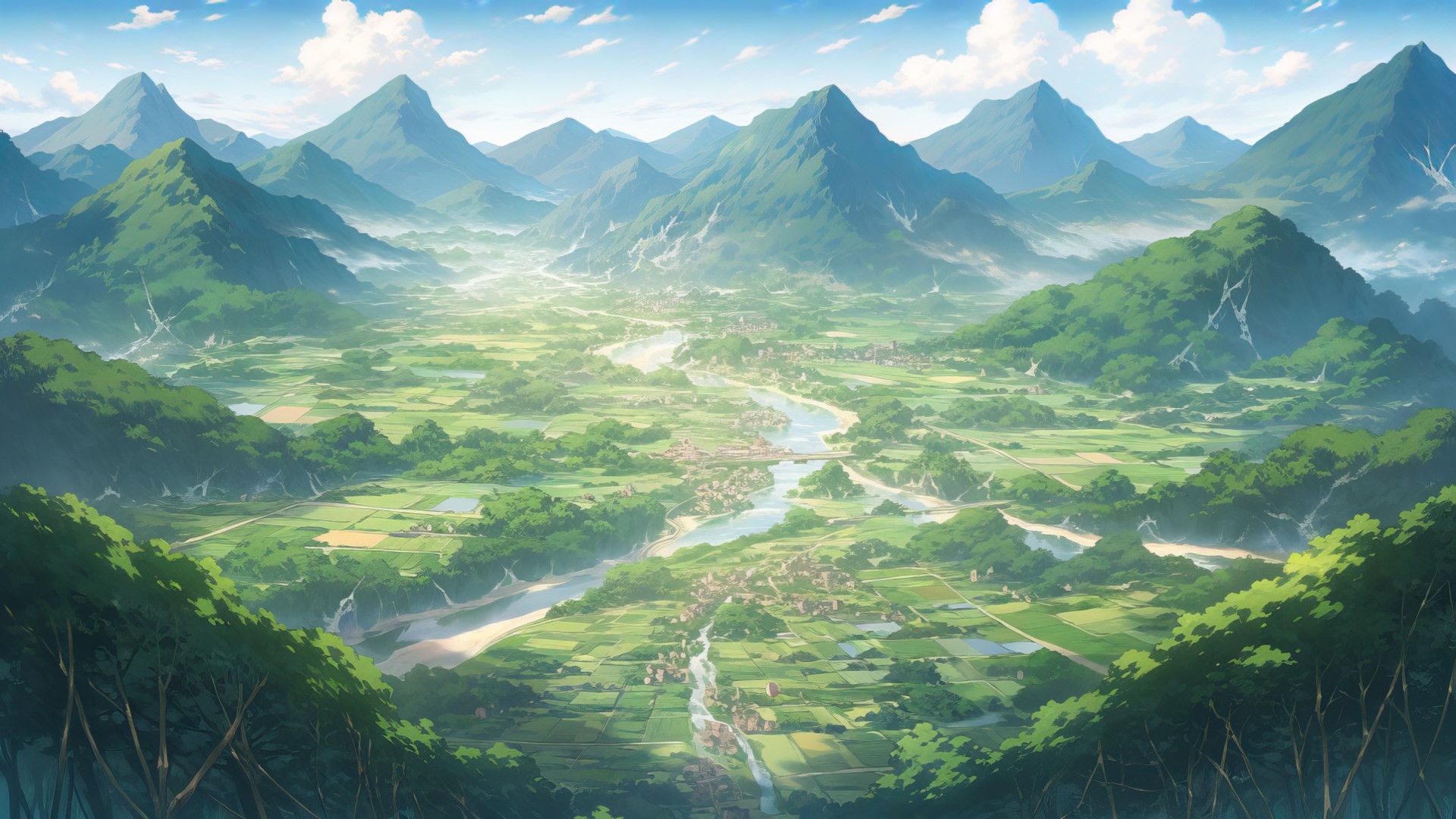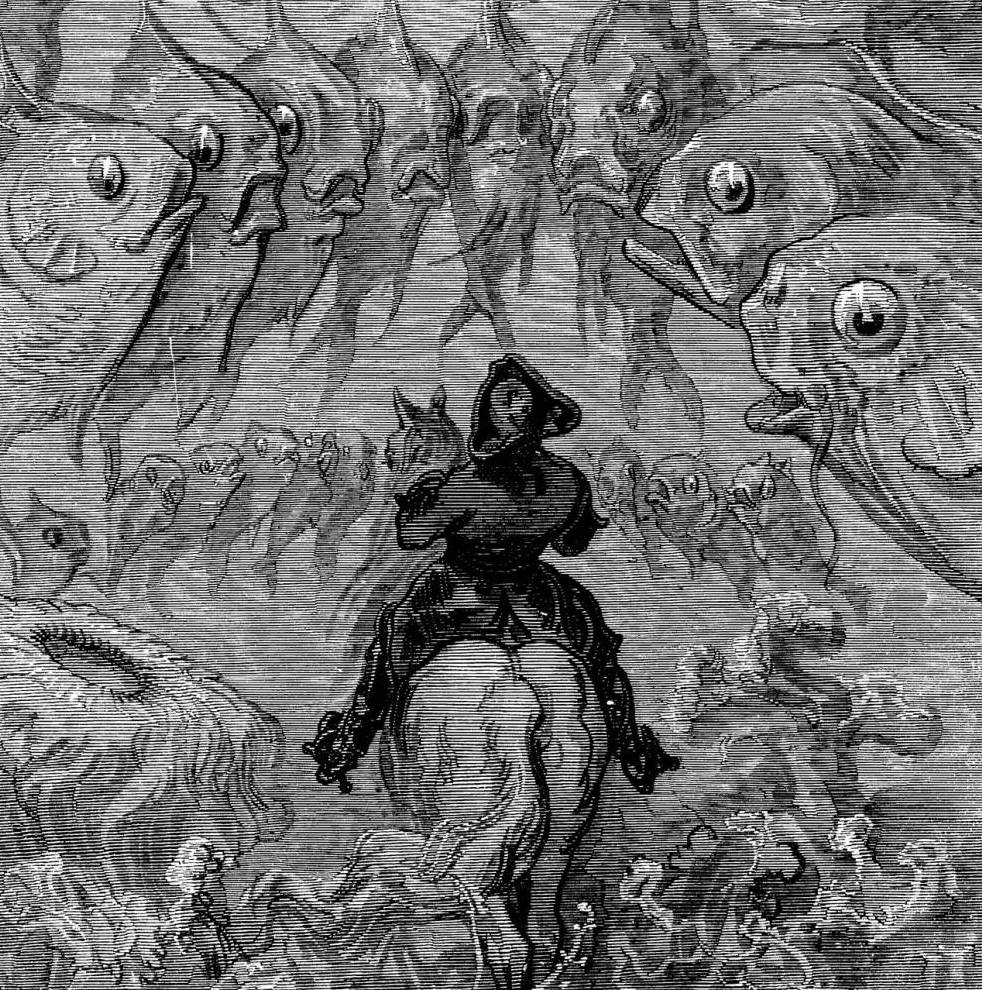Aeclind River Basin
You can just barely hear the waters from the Grand campus. It's soothing to listen to at night.
Geography

Nearby Settlements
The Aeclind River and its tributaries border a total of six towns, cities, or academies (in addition to dozens of minor villages). However, not all settlements are entirely reliant on the Aeclind:- Aemark City: As the capital of the Kingdom and seat of its power, the river is a critical factor in both inter- and intranational trade. Further, without a means to provide food stuff en masse to its populace, the City would not have grown to its current size, nor have adequately served as home of the King.
- Venleif: The modest trading town takes advantage of the Aeclind and of the Grand Arcane Academy. Merchants frequently sell magical components or items in its market, which are highly sought after by the wizards of the Grand. Simultaneously, enchanters keen to invest in their future business ventures post-graduation leverage the busy markets to generate funds to start such endeavors.
- Grand Arcane Academy: Surprisingly, the Grand's campus and large student body relies little upon the Aeclind River. Similarly to other Academies, the far more important geographic feature is a nearby aether vent supplying the vast quantities of energy such institutions require. The river is useful, but hardly critical to its success.
- Elven Conclave: As a village with minimal trade or strategic importance, the Conclave recieves little support from the rest of Kingdom. Caravans rarely pass through, preferring instead to follow the southerly route nearer the South Sea. Conclave Elves live independently out of necessity and accept the added burden of self-reliance compared with the alternative of close scrutiny by the Kingdom's political system.
- Tolhonin Academy: Tolhonin is vital to the wars against the Coalition and Alliance. The total number of combat-specialized wizards graduating from all other Academies combined still does not match Tolhonin's. Unlike others, the Tolhonin Academy relies upon the Aeclind to sustain the high demand for magical components needed for combat at the nearby warfront.
- Venprenta: Chitin wheat harvested from the Southern Fields is sent to Kaedruln or Venprenta, both of which produce mana-enhanced bread later shipped by either land or water, respectively. The town itself is the preferred destination for military contingents on their way to the primary warfronts.
Ecosystem
Depending on the segment of the Aeclind River, the flora and fauna range from omnipresent to dismally bereft. Ecologically, the Aeclind River Basin is subdivided into five regions, each with their own characteristics and ecosystem.Eastern Tributary - South
The southern portion of the eastern tributary is bordered by the Southern Fields to the west, which has a significant effect on riverside ecology. The Aemark Kingdom's chitin wheat fields must capture mana locusts during their lifecycle to preserve their mana in the plant's cocoon, which is later used in the production of chitin bread. The substantial number of locusts needed to supply the food to Aemark's wizards requires a huge number of hatcheries. They are situated along the tributary's western side and irrigated for locust matriarchs to lay eggs. Every year, the locusts hatch and fly to the west towards the Druln Wetland, but will rest upon stalks during the journey, often ending their life as part of the wheat's reproductive lifecycle and coalescing into a chitinous cocoon. The immediate eastern bank of the tributary alternates between an active environment for larger game, who briefly migrate to partake of the lush vegetation. Bison are known to travel southward from the Giant's Shelf to its fertile waters during their mating season. Following such attractive prey, wolves trail their trek south, eager to sink their teeth into lagging prey. Some Kaokutian bird species nest along the river during the spring before the locust swarms hatch. However, once the hatching begins, all of these fauna vacate the area. While the swarms generally head westward, they may spread as far east as Tolhonin. While humanoids are equipped to deal with the nuisance, everyday animals are harried by the barrage of aimless insects and incessant noise. Strangely, a species of fish has taken unique advantage of the hatching season: the Aeclind flyer. These flyers are able to jump out of the water and gorge themselves on mana locusts for weeks. Scholars believe the aquatic predator feasts upon the high mana concentration of the insects to quicken their growth cycle. The current theory indicates a flyer reaches full maturity in just one hatching cycle as opposed to a normal four-year lifecycle. Further, scholars theorize an enterprising group of merchants introduced the species from foreign lands because no record of such an unusual fish exist prior to chitin wheat plantations. Coincidentally, a small village opposite the fields is home to fishers capitalizing on the accelerated growth and selling the lush, mana-dense fish to Tolhonin Academy and Venprenta.Eastern Tributary - North
The northern segment of the eastern tributary remainst the primary source of fresh water for the Elven Conclave, though the elves spend little time on its banks. Prior construction from its time as the elven colony of Aeleatir provides water through collection basins within the village, which draw water from the Aeclind without manual labor. Without the interference of locusts, the eastern side of the tributary is home to waterfowl and smaller terrestrial animals. Rodents, rabbits, and foxes are commonplace and are easy game for the locals. Rarely, packs of wolves or pairs of mountain lions will descend from the Green Barrier on either side of the tributary. Elven hunters take care to avoid them as they venture out of such places due to starvation and necessity, making them dangerous to cross. Even more unusual, a trio of dire wolves may descend from the eastern Green Barrier to prey upon migrating bison (and unfortunate passerby). Both elven and human locals take shelter in the Conclave during such events, much to the consternation of both. Scholars remain unsure why the fearsome beasts leave their natural grounds, but have too much care for their lives to risk investigating. The western bank bordering the Arid Flat is all-but-lifeless. While the Aemark Kingdom is remarkably temperate, the Arid Flat is uniquely dry and constantly hot, contributing to a harsh environment for any plant or animal. Some insects and beetles have managed to survive near the Aeclind by eating light grass and vegetation on the eastern bank while making their home on the western, but even this is sporadic. Small fish prey upon these insects, but it is a meager existence. A small inn stands out as the sole example of civilization. It serves Glassers on their way to Black Glass Bowl almost exclusively and relies on their donations (and the odd fish they may catch).Nothern and Central Eastern Tributaries
The northern tributary and the first segment of the eastern tributary share a common ecosystem. Both border the Green Barrier to the east and the Singing Forest to the west. The forests are home to a variety of small game animals, but are notable for a large population of bears, who frequent both the forest and the edge of the mountain range. The lifecycle of Aeclind fish offers a tantalizing dinner as they swim against the current, especially at the convergence of the two tributaries where natural eddies and rocks ease the difficulty of catching a fish unawares. The eastern banks are home to mountain goats, large predatory birds, and leopards. The goats subsist off of the kelp-like, green plant for which the Barrier was named and will occasionally venture toward the river itself for alternative sustenance during the winter. The birds, including the blood hawk, nest in the mountains, but hunt game in the Singing Forest. (Blood hawks are identified by their crimson plumage and aggressive demeanor. The first Aemark King adopted the predator for their heraldry.) Leopards will generally predate upon mountain goats, though they have attacked young bears in times of famine. Along the valley between the forest and mountains, visitors hear an almost constant whispering, rising to a full-throated, sorrowful song when the weather graces the region with high winds. Scholars believe the noise emanates from the upper boughs of the gracious pine trees, so named for their curiously curved and sweeping branches, which appear as a noble bowing before the King. The unique shape of their needles, which likewise curve, may contribute to the keening.Main Aeclind River
At its full breadth, the Aeclind River spans three miles, though the majority of the main river rarely exceeds a thousand yards. Villages and ferries dot the length of it and travelers rarely find themselves without a means to swiftly move up or downstream. Fish are plentiful, though the Aemark government attempts to regulate where fishing occurs. Larger mercantile vessels take priority amongst the many ships traversing the river and a smaller boat could easily become scrap before it returns with its catch. Along the northern bank to the south of Venleif, the Daymark Hills border the Aeclind. Unfortunately, most of the small villages along this section of the river are home to bandits (or near enough it does not matter). These miscreants patrol the Daymark Hills for passing caravans, but also hunt the wild dogs and deer roaming the hills for both sport and food. The Aemark militia patrols the central road through the hills, but does not aim to solve the issue of decreasing animal population. Closer to Aemark City, the Daymark Forest occupies the region between the Daymark Hills and the City. Unfortunately, Aemark expanded rapidly at the expense of the forest, which has receded dozens of miles compared to its original footprint. The government only recently came to realize the long-term effect this would have on future growth and has since tightly controlled logging and mandated reforestation. The animals native to the forest are wary to venture forth, reducing the size of their population and contributing to a much narrower diet. Several species are no longer found, including the three-tusked boar (which is more accurately described as two-tusked and single-horned). Remaining examples of these species can be found only on the walls of nobility. The Nightmark Hills border the majority of the southern bank. The extensive cave sytems of these hills excites scholars and artists alike due to their unique rock formations and fauna. Bats, otherwise rare in the Kingdom, are common along with a wide variety of nocturnal animals, such as owls, raccoons, and coyotes. Hunters are common in the region because Kaedruln encourages the reduction in wildlife to protect the Southern Fields, even though most of the game they kill avoid the area. Uniquely, the Nightmark Hills are home to the last known population of non-domesticated Ginroc lizards, an especially intelligent and efficient creature. Its natural ability to absorb ambient mana reduces its need for conventional sustenance and allows it to engage in great feats of strength and speed when required. Despite its use as anything from a farm animal to a guard lizard, non-domesticated ginrocs are fearsome and routinely outwit and maim hunters with pack tactics. Finally, the Druln Wetland draws from the mouth of the Aeclind River to maintain the unpalatable and dangerous bog. Though scholars endeavor to document the unique conventional and magical species home to the Wetland, not all survive. The city of Kaedruln gathers reagents from the marsh even though it requires significant expertise and combat resources. Of particular note is the vicious bogbear, whose resemblance to a bear is only passing at best. Without a well-trained group and a healthy dose of luck, the 12-foot monstrosity is almost assuredly a death sentence.River Basin
Alternate Name(s)
King's River
Parent Location
Aemark Kingdom - Location
Owning Organization
Aemark Kingdom
Flying Fish Factory
The juiciest and most satisfying of all aquatic game lies within the heart of Aemark. Our speciality at FFF is to provide the most sublime experience known to a delicate and sophisticated palate. No one can convince me otherwise: all Aemark fish taste the same.Soundtrack by SK Kage (via AIVA.ai)
Edited by Shikya Enelladalcol Aeleat
Mindcepts by Ella Enelnasalcol Malric






Certainly an important river! I really liked the part discussing the fish that leap out of the water to eat the mana locusts. :D
That was my favorite part to write as well. The rest feels like a bit of a tour more than an article. I might come back and update it for some additional stuff. <3